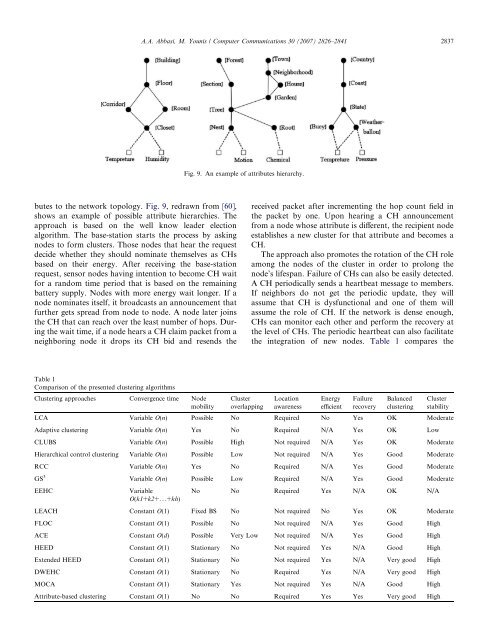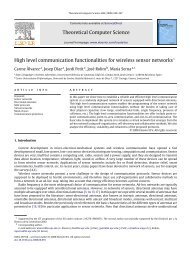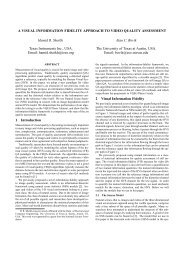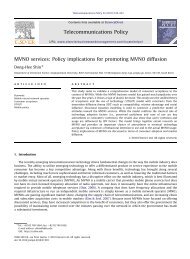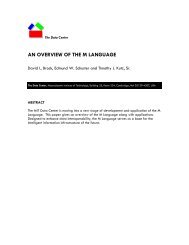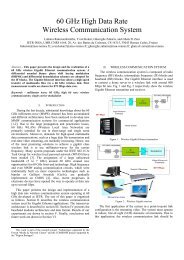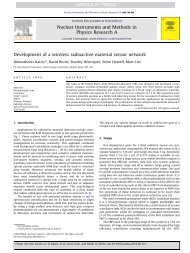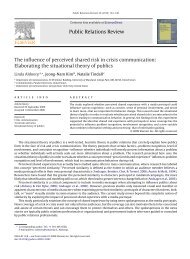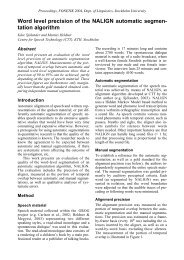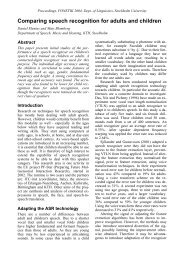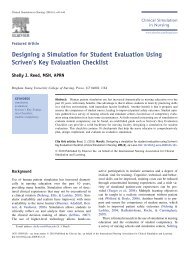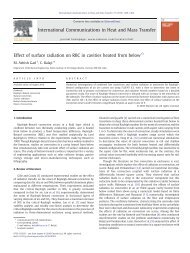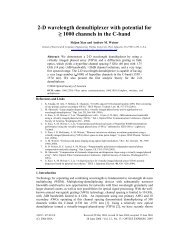A survey on clustering algorithms for wireless sensor networks
A survey on clustering algorithms for wireless sensor networks
A survey on clustering algorithms for wireless sensor networks
Create successful ePaper yourself
Turn your PDF publications into a flip-book with our unique Google optimized e-Paper software.
utes to the network topology. Fig. 9, redrawn from [60],<br />
shows an example of possible attribute hierarchies. The<br />
approach is based <strong>on</strong> the well know leader electi<strong>on</strong><br />
algorithm. The base-stati<strong>on</strong> starts the process by asking<br />
nodes to <strong>for</strong>m clusters. Those nodes that hear the request<br />
decide whether they should nominate themselves as CHs<br />
based <strong>on</strong> their energy. After receiving the base-stati<strong>on</strong><br />
request, <strong>sensor</strong> nodes having intenti<strong>on</strong> to become CH wait<br />
<strong>for</strong> a random time period that is based <strong>on</strong> the remaining<br />
battery supply. Nodes with more energy wait l<strong>on</strong>ger. If a<br />
node nominates itself, it broadcasts an announcement that<br />
further gets spread from node to node. A node later joins<br />
the CH that can reach over the least number of hops. During<br />
the wait time, if a node hears a CH claim packet from a<br />
neighboring node it drops its CH bid and resends the<br />
Table 1<br />
Comparis<strong>on</strong> of the presented <strong>clustering</strong> <strong>algorithms</strong><br />
Clustering approaches C<strong>on</strong>vergence time Node<br />
mobility<br />
A.A. Abbasi, M. Younis / Computer Communicati<strong>on</strong>s 30 (2007) 2826–2841 2837<br />
Fig. 9. An example of attributes hierarchy.<br />
Cluster<br />
overlapping<br />
received packet after incrementing the hop count field in<br />
the packet by <strong>on</strong>e. Up<strong>on</strong> hearing a CH announcement<br />
from a node whose attribute is different, the recipient node<br />
establishes a new cluster <strong>for</strong> that attribute and becomes a<br />
CH.<br />
The approach also promotes the rotati<strong>on</strong> of the CH role<br />
am<strong>on</strong>g the nodes of the cluster in order to prol<strong>on</strong>g the<br />
node’s lifespan. Failure of CHs can also be easily detected.<br />
A CH periodically sends a heartbeat message to members.<br />
If neighbors do not get the periodic update, they will<br />
assume that CH is dysfuncti<strong>on</strong>al and <strong>on</strong>e of them will<br />
assume the role of CH. If the network is dense enough,<br />
CHs can m<strong>on</strong>itor each other and per<strong>for</strong>m the recovery at<br />
the level of CHs. The periodic heartbeat can also facilitate<br />
the integrati<strong>on</strong> of new nodes. Table 1 compares the<br />
Locati<strong>on</strong><br />
awareness<br />
Energy<br />
efficient<br />
Failure<br />
recovery<br />
Balanced<br />
<strong>clustering</strong><br />
Cluster<br />
stability<br />
LCA Variable O(n) Possible No Required No Yes OK Moderate<br />
Adaptive <strong>clustering</strong> Variable O(n) Yes No Required N/A Yes OK Low<br />
CLUBS Variable O(n) Possible High Not required N/A Yes OK Moderate<br />
Hierarchical c<strong>on</strong>trol <strong>clustering</strong> Variable O(n) Possible Low Not required N/A Yes Good Moderate<br />
RCC Variable O(n) Yes No Required N/A Yes Good Moderate<br />
GS 3<br />
Variable O(n) Possible Low Required N/A Yes Good Moderate<br />
EEHC Variable<br />
O(k1+k2+...+kh)<br />
No No Required Yes N/A OK N/A<br />
LEACH C<strong>on</strong>stant O(1) Fixed BS No Not required No Yes OK Moderate<br />
FLOC C<strong>on</strong>stant O(1) Possible No Not required N/A Yes Good High<br />
ACE C<strong>on</strong>stant O(d) Possible Very Low Not required N/A Yes Good High<br />
HEED C<strong>on</strong>stant O(1) Stati<strong>on</strong>ary No Not required Yes N/A Good High<br />
Extended HEED C<strong>on</strong>stant O(1) Stati<strong>on</strong>ary No Not required Yes N/A Very good High<br />
DWEHC C<strong>on</strong>stant O(1) Stati<strong>on</strong>ary No Required Yes N/A Very good High<br />
MOCA C<strong>on</strong>stant O(1) Stati<strong>on</strong>ary Yes Not required Yes N/A Good High<br />
Attribute-based <strong>clustering</strong> C<strong>on</strong>stant O(1) No No Required Yes Yes Very good High


